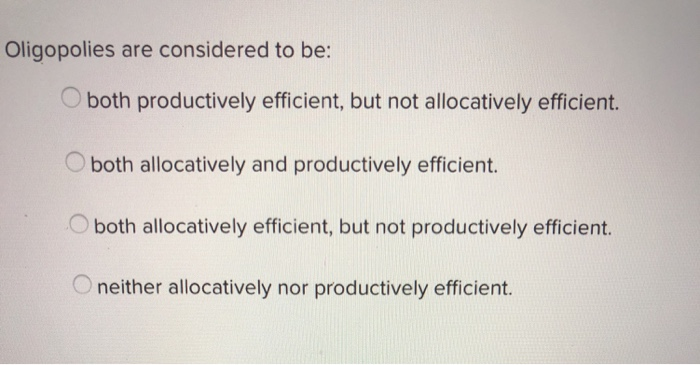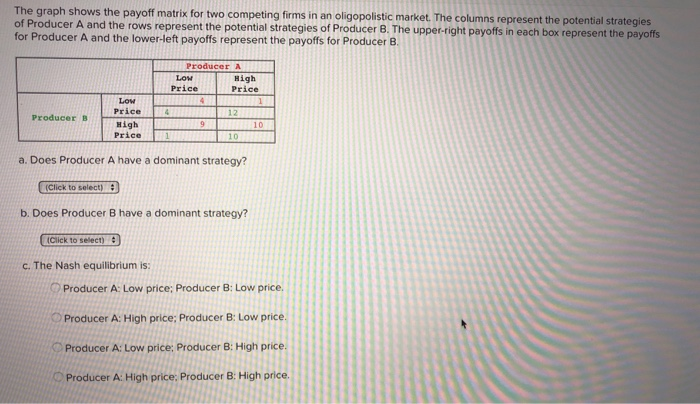Answered step by step
Verified Expert Solution
Question
1 Approved Answer
Oligopolies are considered to be: both productively efficient, but not allocatively efficient. both allocatively and productively efficient. both allocatively efficient, but not productively efficient.


Oligopolies are considered to be: both productively efficient, but not allocatively efficient. both allocatively and productively efficient. both allocatively efficient, but not productively efficient. neither allocatively nor productively efficient. The graph shows the payoff matrix for two competing firms in an oligopolistic market. The columns represent the potential strategies of Producer A and the rows represent the potential strategies of Producer B. The upper-right payoffs in each box represent the payoffs for Producer A and the lower-left payoffs represent the payoffs for Producer B. Producer B (Click to select) Low Price High Price a. Does Producer A have a dominant strategy? (Click to select) Producer A 4 c. The Nash equilibrium is: LOW Price High Price 9 12 b. Does Producer B have a dominant strategy? 10 1 10 Producer A: Low price; Producer B: Low price. Producer A: High price; Producer B: Low price. Producer A: Low price: Producer B: High price. Producer A: High price; Producer B: High price.
Step by Step Solution
★★★★★
3.52 Rating (165 Votes )
There are 3 Steps involved in it
Step: 1
1 Answer D Oligopoly neither allocative nor productively efficient Explanation Allocative efficiency ...
Get Instant Access to Expert-Tailored Solutions
See step-by-step solutions with expert insights and AI powered tools for academic success
Step: 2

Step: 3

Ace Your Homework with AI
Get the answers you need in no time with our AI-driven, step-by-step assistance
Get Started


